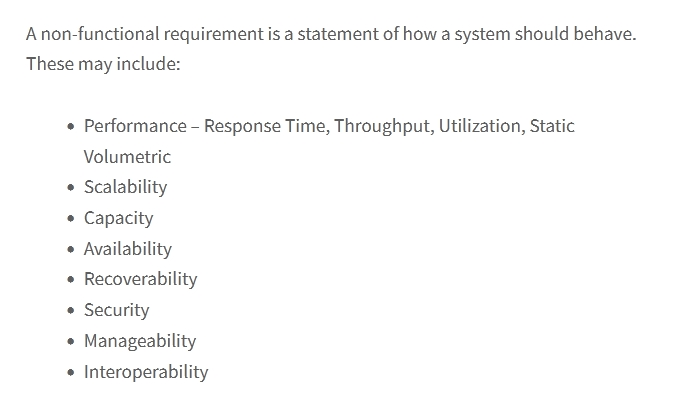Which two of the listed requirements would be classified as performance non-functional requirements? (Choose two.)
- A. The vSphere platform must be able to provide a recovery time objective of 30 minutes
- B. The vSphere platform must be able to provide a minimum throughput of 400 MB/s
- C. The vSphere platform must be able to provide N+1 redundancy
- D. The vSphere platform must be able to provide a maximum read latency of 15 ms
- E. The vSphere platform must be able to provide a service-level agreement (SLA) of 99,9%
Answer : AD
Reference:
https://technicloud.com/category/vmware/

An architect will be taking over control of a former Linux server fleet and repurposing the hardware into a new vSphere cluster. The current environment is already connected to the network but the hosts do not have any local disks. Since the fleet hardware is uniform, the architect can use a single ESXi image. All hosts within the cluster have the same CPU and memory capacity.
Which ESXi deployment method should the architect use?
- A. Stateless cached vSphere Auto Deploy
- B. Stateless vSphere Auto Deploy
- C. Manual install of each ESXi host with an image from USB
- D. Stateful vSphere Auto Deploy
Answer : A
Reference:
https://docs.vmware.com/en/VMware-vSphere/7.0/com.vmware.esxi.install.doc/GUID-0813B4BE-485D-4129-902B-49AA42EBF54E.html

An architect is finalizing the design for a new vCenter Server High Availability deployment.
What is one thing the architect must document in the design?
- A. The load balancing algorithm used by the Management Distributed Virtual Switches (DVS)
- B. The SSH configuration settings for the vCenter Serverג€™s active node
- C. The vCenter Management Network IPv4 addresses for the witness node vCenter Server
- D. The details of each of the vCenter Server licenses for active, passive and witness nodes
Answer : A
An architect is considering placement of virtual machines within an existing VMware software-defined data center (SDDC).
During the discovery phase, the following information is documented:
Cluster One -
✑ Six ESXi hosts
✑ vSphere HA with host failures cluster tolerates = 1
✑ Proactive HA is enabled and set to automated
✑ Fully Automated vSphere DRS
✑ Transparent Page Sharing (TPS) is enabled
Cluster Two -
✑ Eight ESXi hosts
✑ vSphere HA with host failures cluster tolerates = 1
✑ Proactive HA is disabled
✑ Partially Automated vSphere DRS
✑ Transparent Page Sharing (TPS) is disabled
Cluster Three -
✑ Three ESXi hosts
✑ vSphere HA with admission control is disabled
✑ Proactive HA is not supported
✑ Transparent Page Sharing (TPS) is disabled
Virtual Machine Resource Profile 1
✑ Memory sharing techniques should not be used
✑ Virtual machines should be automatically restarted in the event of host failure if resources are available
✑ Automated initial virtual machine placement
Virtual Machine Resource Profile 2
✑ Memory sharing techniques should not be used
✑ Virtual machines should be automatically restarted in the event of host failure regardless of available resources
✑ Automated initial virtual machine placement
Which two recommendations should the architect make for placement of the virtual machines to meet resource profile requirements? (Choose two.)
- A. All virtual machines matching Virtual Machine Resource Profile 2 should be placed on Cluster One.
- B. All virtual machines matching Virtual Machine Resource Profile 1 should be placed on Cluster One.
- C. All virtual machines matching Virtual Machine Resource Profile 2 should be placed on Cluster Two.
- D. All virtual machines matching Virtual Machine Resource Profile 1 should be placed on Cluster Two.
- E. All virtual machines matching Virtual Machine Resource Profile 2 should be placed on Cluster Three.
Answer : BE
An architect is designing a new VMware solution for a customer that has a number of different resource profiles.
The following are the business requirements for the design:
✑ The solution must support virtual machines with the following storage profiles:
- Write-intensive
- Backup
- Write-Once-Read-Many (WORM) archive
✑ The solution must support migration of virtual machine disks between storage profiles.
✑ The WORM archive data must be located at an isolated secure site.
✑ The backup storage array must only be connected to a backup media server.
✑ All data should be recoverable from backup.
Which design decision should the architect make to meet the business requirements?
- A. The solution will leverage a single storage array for the WORM archive and write-intensive storage profiles
- B. The solution will leverage the same array for the backup and write-intensive storage profiles
- C. The solution will leverage a different array for each storage profile
- D. The solution will leverage a single storage array for all storage profiles
Answer : C

